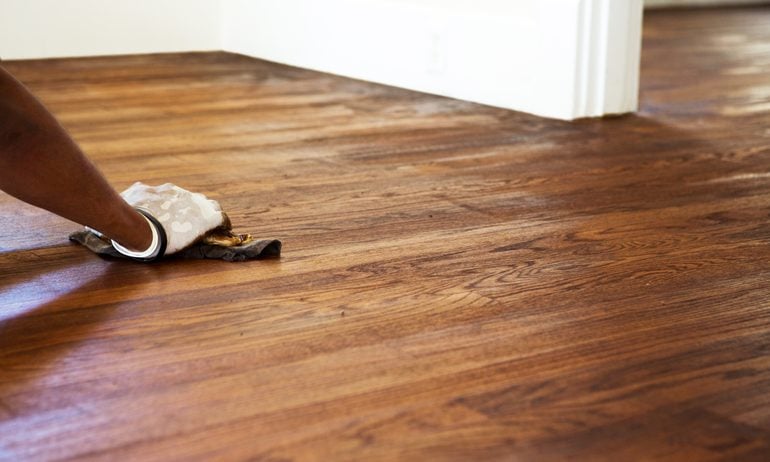Cost to Refinish Hardwood Floors in 2025
It costs an average of $600 to $6,000 to refinish hardwood floors, depending on floor size, material and finish.

Many, or all, of the products featured on this page are from our advertising partners who compensate us when you take certain actions on our website or click to take an action on their website. However, this does not influence our evaluations. Our opinions are our own. Here is a list of our partners and here's how we make money.
Table of Contents
Table of Contents
You can expect to spend between $3 and $8 per square foot when refinishing your home’s hardwood floors. A single room could cost a few hundred dollars, while expenses could exceed $6,000 for the whole house.
The main considerations that affect the price are the size of the floor, type of wood and type of finish. When it comes time to pay for your floors, you can explore different methods of financing to find the best solution for your needs.
Cost factors
Size
The square footage of the space will play a large role in calculating the final price.
40 square feet: $120-$320.
100 square feet: $300-$800.
400 square feet: $1,200-$3,200.
1,000 square feet: $3,000-$8,000.
Wood type
The type of flooring in your home will be factored into your cost estimate.
Bamboo: $2-$6 per square foot.
Cherry: $3-$5 per square foot.
Engineered wood: $3-$6 per square foot.
Oak: $3-$5 per square foot.
Parquet: $3-$6 per square foot.
Mahogany: $5-$8 per square foot.
Maple: $6-$8 per square foot.
Refinishing process
Your costs will also depend on the refinishing processes required for your floors.
Sanding: $0.50-$3 per square foot.
Staining: $1-$3 per square foot.
Recoating: $1-$2 per square foot.
Does refinishing hardwood floors add value?
According to the National Association of Realtors’ 2022 Remodeling Impact Report, refinishing hardwood floors had greater cost recovery than every other interior project measured. By their estimate, the average homeowner spent $3,400 on this project and gained $5,000 of value, recovering 147% of the project investment.
Can I get financing for a home repair or improvement?
Your contractor may offer some financing options (either through a partner or a payment plan), but there are other — any maybe better — financing options available.
Which financing option is best for me?
The best financing option for you will depend on how much money you need, when you need the money, what project you’re doing and how long you need to pay the money back. If it’s something that’ll add value to your home, a HELOC or home equity loan may be your best option because the value of your house could increase by more than the amount of the loan.
On the flip side, if it’s a less expensive repair, a credit card is probably your best option if you want to pay no interest or earn rewards. Personal loans can apply to both small and large repairs or renovations, and they may make sense if you don’t have much equity in your home.
Some home improvement contractors offer their own financing options. Before taking this option, shop around and see how their offer compares with other loans.
Regardless of what you choose, make sure you compare interest rates, terms and fees with any financing options you’re considering. This will ensure you get the best deal.




